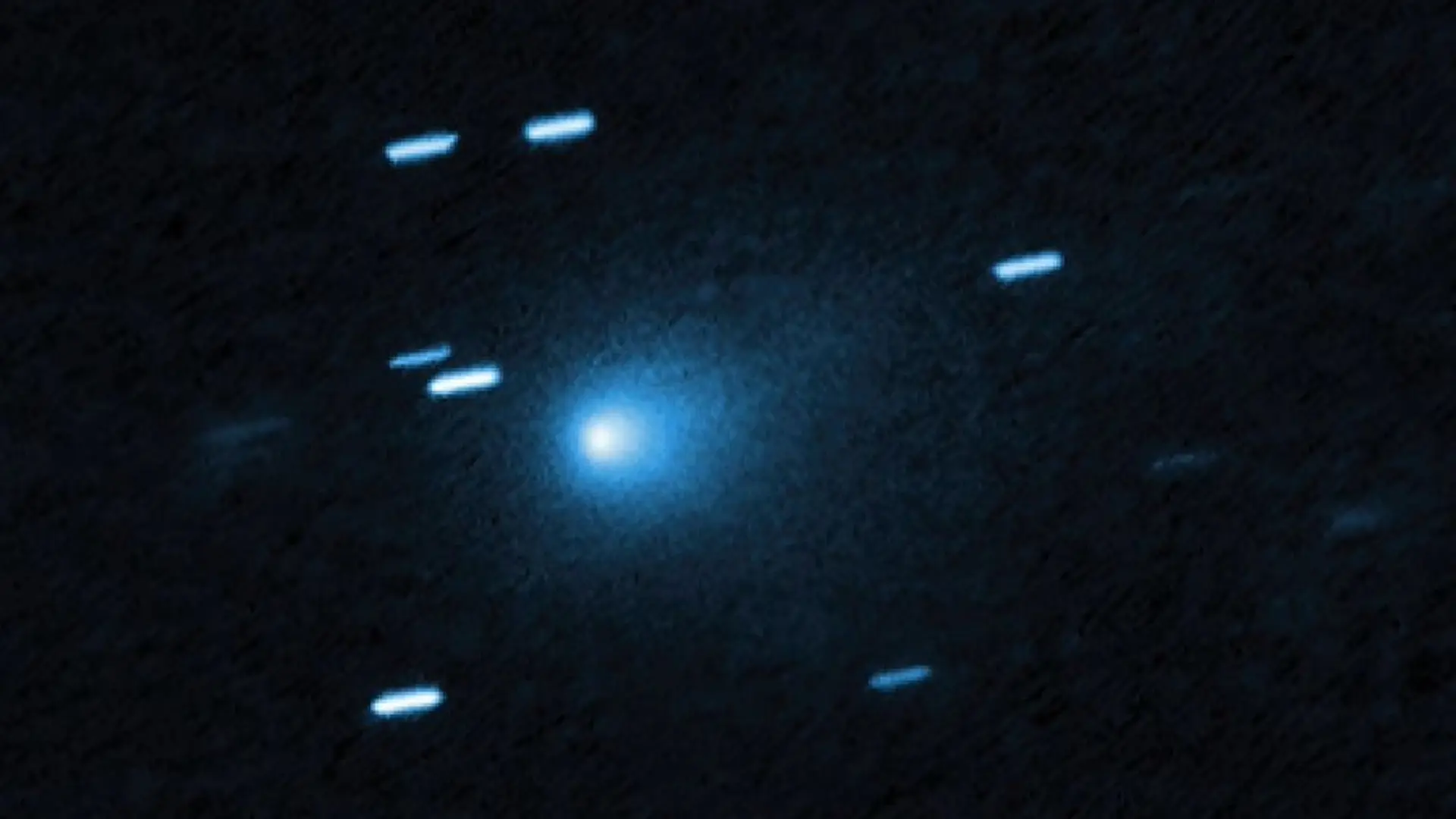Dr. Michio Kaku believes 3I/ATLAS data could finally unravel the alien mystery by October 30
-
 Interstellar comet 3I/ATLAS (Image via NASA)
Interstellar comet 3I/ATLAS (Image via NASA)Dr. Michio Kaku, a Professor at the City College of New York and author of Quantum Supremacy, believes mysterious interstellar object 3I/ATLAS may provide answers to alien speculations on October 30, 2025.
In an interview with NEWSMAX on October 25, 2025, Dr. Kaku mentioned that 3I/ATLAS, which is roughly the size of Manhattan and displays unconventional movements, may solve the alien mystery, proving whether it is a rock or something extraterrestrial.
“The majority believe it's just another rock from deep space, but it is the third interstellar object we've ever recorded. But a growing number suspect it may be something more, perhaps an intelligent visitor from another solar system,” he said.
According to the Professor, the coming week is significant for scientists and enthusiasts as 3I/ATLAS will reach its “closest point to the Sun around October 30, 2025.”
It will allow scientists to monitor the nature of the object and analyze its behavior.
Dr. Kaku believes that if the object gains extra energy while surpassing the conventional laws of conservation of energy, it may hint that an intelligence is guiding it.
Dr. Kaku breaks down how a change in the laws of conservation of energy may signal the existence of an extraterrestrial intelligence
Dr. Kaku shared that he upcoming week will be a significant week for scientists, who have been studying the 3I/ATLAS comet since its emergence.
The moment it comes the closest to the Sun on October 30, it will allow experts to figure out if the comet is simply an object or a visit from extraterrestrial intelligence.
Dr. Kaku explained that the impending solar pass will permit researchers to observe the phenomenon called the “Oberth Effect,” a principle in orbital mechanics.
“The Oberth Effect says that if you were to whip around the Sun, you would pick up extra energy in the process. So, we’re gonna watch for it. The energy in must equal the energy out, according to the ordinary theory,” Dr. Kaku said.
He continued:
“But if that’s not true, if there’s more energy going out than in, it means that there’s energy boost coming from whipping around the sun, and that requires intelligence.”
He reiterated that if 3I/ATLAS picks up extra energy, it will confirm that there is intelligent life beyond the realm of Earth that is guiding the motion of the object.
Dr. Kaku shares his take on the existence of life beyond Earth
When asked about the existence of an extraterrestrial presence, Dr. Kaku said that he believed there is intelligent life throughout the galaxy.
According to him, there is intelligent life in the “neighborhood of the Milky Way galaxy.”
While he believed in the presence of extraterrestrial beings, he wondered if they could visit humans on Earth.
“That’s the big question because just to go to the nearest star will take 70,000 years for the conventional rocket,” he added.
What is comet 3I/ATLAS
Comet 3I/ATLAS is the third known object to be identified passing through the celestial neighborhood from beyond the solar system.
Since it has a hyperbolic shape of its orbital path, astronomers have categorized it as interstellar.
The orbit of 3I/ATLAS is traced to have originated from outside the Earth’s solar system.
According to NASA:
“Comet 3I/ATLAS poses no threat to Earth and will remain far away. The closest it will approach our planet is about 1.8 astronomical units (about 170 million miles, or 270 million kilometers). 3I/ATLAS will reach its closest point to the Sun around Oct. 30, 2025, at a distance of about 1.4 au (130 million miles, or 210 million kilometers).”
Stay tuned for more updates.
TOPICS: 3I/ATLAS, Dr. Michio Kaku, Comet, Interstellar Comet, NASA
- 3I/ATLAS exhibits a 14th anomaly in its jet-Sun geometry – Details explored
- Astronomers detect a pulsing sunward jet from interstellar object 3I/ATLAS
- New images show anti-tail of 3I/ATLAS measured at greater length than Earth-Moon distance
- Viewing 3I/ATLAS up close on December 19 – Which telescopes can help